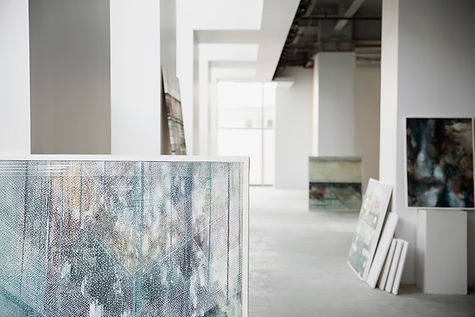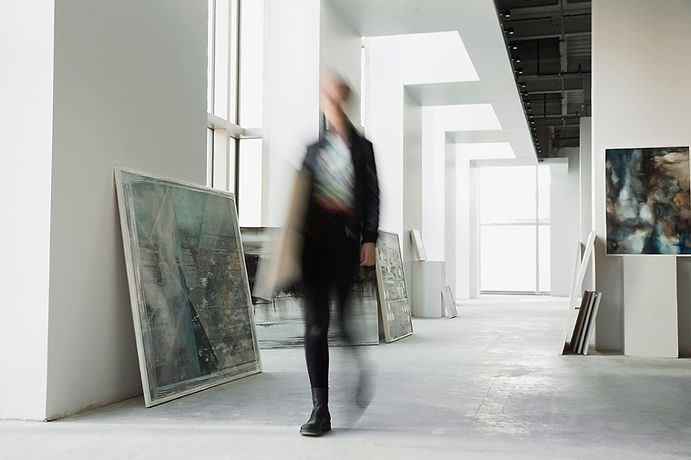
CENTER FOR ARTS AND MEDICINE
University Hospital for Tumors, Sestre milosrdnice University Hospital Center,
Zagreb, Croatia
CENTER FOR ARTS AND MEDICINE AT A GLANCE
Since 2016

OUR STORY
Working Towards a Better Tomorrow

ACTIVITIES
Center for Arts and Medicine is in the business of changing and shaping lives. The work we do at our Unit is aimed at providing a holistic approach to cancer patients and their families, through interventions in hospital space, presentations of arts and art therapies.

EXIBITIONS
Panacea Gallery was founded by professor Fabijan Knežević in 2011 and is exibiting individual author's exibitions countinously to date. Since 2011 we enjoyed the works of Osman Berberović, Goran Vranić and Vesna Sokolić; CEPAMET project implemented by School of Medicine, University of Zagreb, Aleksandar Forenbacher, Ivo Pervan, Ivana Vulić, Iva Višošević, Martina Gulan, Đuro Seder, Toni Franović, Damir Fabijanić, Makiko Akitsu, Monika Meglić, Marija Koruga, Goran Letić and David Kelčec.

CONCERTS
Musicology Department of Academy of Music, University of Zagreb, in cooperation with Center for Arts and Medicine (CUM) has launched a MUK project: University Hospital for Tumors host concerts on monthly basis of concerts since 2016.
*(Muzika U Klinike = Music in/to Clinics; muk in croatian means silence)
ACTIVITIES
Center for Arts and Medicine is in the business of changing and shaping lives. The work we do at our Unit is aimed at providing a holistic approach to cancer patients and their families, through interventions in hospital space, presentations of arts and art therapies.

ART THERAPY
Art therapy is a form of psychotherapy in which the primary means of communication between a client and a therapist is visual arts media, i.e. the creative visual arts process.
One of the fields in which art therapy is applied is oncology; art therapy is hence directed at reinforcement and support in the process of facing the diagnosis, in the course of the period of hospitalization and treatment, during the remission stage and in the palliative care.
It is suitable for both children and adults who are facing the disease as well as for their families and the medical staff included in the treatment.
The art therapy process can help in recognizing, expressing and processing feelings, thoughts and worries; it can relieve pain, anger, depression, fear and stress; it can support the sense of safety and control; it can support the development of the healthy mechanisms of coping with stress; it can support the development of the ability of regulating emotions, the ability of a better understanding of oneself and other people and it can facilitate the process of putting up with the changed body figure. Art therapy can be implemented as an individual or a group process.
Jasna Rajković, BA (Rehabilitation) and MSc in Art Psychotherapy (HCPC registered)

MUSIC THERAPY
Music therapy activities rely on the spontaneous use of music tailored to meet the needs, abilities and preferences of the users. Orff’s multisense instruments are used in order to create a pleasant and positive ambience. To improvise the music, voice and rhythm and melody percussion instruments are used (metallophones, xylophones, bass resonators). It provides for all the users to take part in creating music here and now. The objective is to create a safe ambience in which the users will be able to show the whole range of their emotions and discover the possibility of communicating through the music. By means of creating a positive and joyful ambiance, a song generated here and now enhances the level of physical, social and emotional functioning. The use of Orff’s instrument range, the motor skills and movement coordination are kept or enhanced. The active creation of music reduces stress, anxiety and depression and enhances the quality of everyday life.
The music therapy activities are intended for all users – children, young people and adults – regardless of their previous musical skills and regardless of their physical abilities.
Professor Ksenija Burić, PhD., Croatian Orff Association, Croatian Music Therapists Association
ACTIVITIES
Center for Arts and Medicine is in the business of changing and shaping lives. The work we do at our Unit is aimed at providing a holistic approach to cancer patients and their families, through interventions in hospital space, presentations of arts and art therapies.

MOVEMENT THERAPY
Rhythm, sound, touch, colours, textures and space along with the use of various objects, toys and materials are conducive to relaxation (reducing stress, anxiety and pain); they as well support development and facilitates the process of coping with life situations (staying in hospital, separation from the parents).
The movement and dance therapy can be applied as an independent or a complementary method of preventing and treating ADHD, eating disorders, depression, malignant diseases, Alzheimer’s disease, Parkinson’s disease and other diseases without any limitations as to the age of the patients
Tončica Šiškov, BA, a registered movement and dance psychoterapist (RDMP), NLP master-practicioner, group analysis educator; Vanda Kos Jerković, MA (defectology), a rehabilitator and a rehabilitator, registered movement and dance psychoterapist (RDMP), transaction analysis educator.

OCCUPATIONAL THERAPY
For Patients
Reading groups in the premises of the Radiotherapy Unit are held every second Tuesday from 3:15 PM on (moderated by Ms Barbara Bračun).
For Employees
Exercising at the workplace:
On Tuesdays and Thursdays , 1:00 – 1:30 PM, stretching exercises coached by Ms Dijana Lujanec
SOS psychologist:
Upon a mail or phone contact, conversations and advice for coping with stressful situations are provided.

"Act as if what you do makes a difference. It does"
William James
CONTACT CENTER FOR ARTS AND MEDICINE
197 Ilica
Zagreb, 10000
Croatia
+385 1 3783 522



